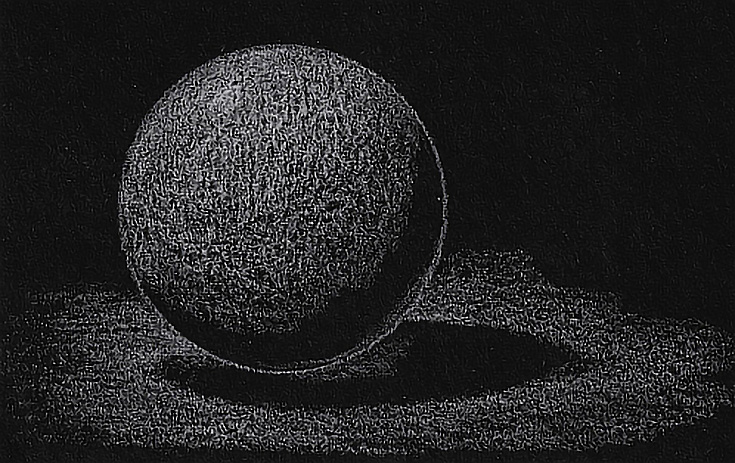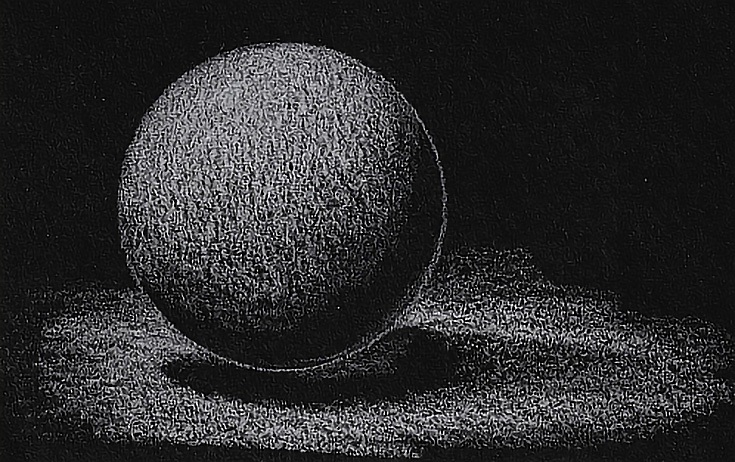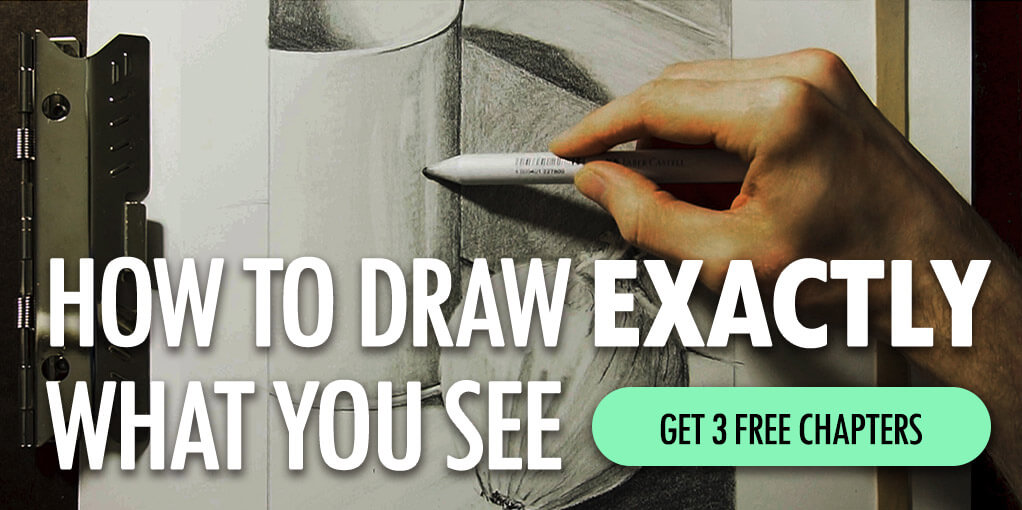Black Paper Drawing Ideas Easy
By Carrie Lewis in Art Tutorials> Drawing Tips
Getting bright colors on a dark background can be a challenge if your favorite medium is colored pencil. The reason is simple.
Most colored pencils are translucent. No matter how heavily you layer them, the color of the paper shows through to some extent, and influences the new color. You have to use a lot of layers—or a lot of pressure—to cover up the color of the paper.
If you're working on white or light-colored paper, that's not a problem. The paper color doesn't play much of a role, and the colors you use will influence each other more directly.
Quick announcement - EmptyEasel has created a quicker, easier way for artists to have their own art website. Click here to learn more and get a simple art website of your own!
Dark papers are different. Any dark paper makes your colored pencils look a lot different. Choose black paper, and you may be left thinking the paper is actually absorbing the colors!
Does that mean you can't draw vibrant color on black paper? Not at all—the solution isn't as difficult or complex as you might be thinking!
First things first:
You'll get better results working from light to dark, even if you usually work dark to light. You won't have to draw dark values, so just concentrate on light values. Start with the highlights, then work down into the middle values.
Be patient! You can get away with a little careless drawing on white or light-colored paper, but black paper is a lot less forgiving. Go slowly and draw smooth layers of color.
Most importantly, you'll need to start your drawing with a white or light-colored underdrawing. Here's how I do it:
Step 1
Draw the entire composition in White, making the color more saturated (less paper showing through) in the brighter areas.
I placed the highlight first to establish the location of the light source. You'll notice as I lighten the rest of the ball, the highlight starts to disappear. That's okay. The highlight will be one of the last things you finish, in all likelihood.

NOTE: Start with a harder pencil such as Caran d'Ache Pablos or Prismacolor Verithin. These pencils hold a tip much longer, and allow you to lay down lighter layers. The finer tip of a well-sharpened hard pencil also fills in the tooth of the paper better.
Step 2
Build lighter values layer by layer. Continue using light pressure, and small, closely spaced strokes to create even layers with soft gradations. Circular strokes leave no start or stop marks, and are ideal for drawing smooth, seamless color. If you're new to colored pencils, it's worthwhile to learn to use them well.
If you're an established artist, use whatever stroke helps you draw smooth color.

Step 3
Continue adding layers of White. For each layer, begin on the brightest part of the ball and work your way around the ball. Work into the darkest shadows a little more, as well, so that gradations in value are smooth.
Also make sure to work "around the surface" of your subject. The shape of your subject affects the shapes of the shadows and middle values, and helps make your subject look three dimensional.
For example, had I made straight edges on the shadows, the ball would have looked flat or lopsided.

Step 4
For the final underdrawing layer, I switched to Prismacolor Soft Core White and brightened the brighter areas once more.
With each layer of White, you want less black paper showing through the brightest areas. You won't be able to cover it completely, but the more you cover, the brighter the area will look.
Be careful to work with light pressure throughout the under drawing, or you risk flattening the tooth of the paper so much that you won't be able to add color on top.

The amount of "finish" you put on your underdrawing is up to you, but it should at least have a nice range of values.
You'll notice in my sample piece that I added reflected light on the ball and in the cast shadow. Those things may not be necessary (or applicable, depending on your subject) but they add realism to the subject and make the under drawing look more complete.
NOTE: Depending on the type of paper you're using, you may be able to blend the underdrawing with odorless mineral spirits to get more even color and better saturation. You'll then be able to continue developing the underdrawing, making the whites whiter and thus emphasizing the shadows.
Step 5
When the white underdrawing is finished, begin layering color over it, just as you would for any other kind of drawing. You will have to make some adjustments to compensate for the black paper, of course, but follow basic layering methods to shade color over the underdrawing.
In this piece, I wanted a red ball, so I used a bright red pencil. I chose a red that's brighter than I'd use on white paper because of the dark background. I also realized quickly that I'd have to add yellow at some point to make the red really "pop," because the black paper and white underdrawing gave it a cool, pink-ish color.
Use light pressure, a sharp pencil, and careful stroking as you add your colors.

Step 6
Continue layering your color (or colors) to create smooth transitions. In my drawing, I also began adding yellow to the surface on which the ball is sitting.
Keep your pencils sharp, and cover as much of the paper color as you can in the areas where you want bright color. Allow the color of the paper to darken your middle values and shadows.

Step 7
I added yellow to the upper surfaces of the ball, including the highlight. Then I layered in more red, and alternated red and yellow to get the brightest, boldest red I could.

Step 8
For the final step, I recommend adding finishing details with more opaque pencils. You can layer them directly over other brands of pencils, or use them over a fixative.
Caran d'Ache Luminance, for example, are more opaque pencils than most. However, they tend to be more expensive, so if a full set isn't in your budget, you might want to just get a few colors you use most often. Derwent Drawing Chinese White is another great white that's also very opaque.
I used a little bit of each of those brands to brighten the highlight and add brighter areas to the surface to finish this demo drawing.

This isn't the only way to get bright color on black paper, but it is the way that works best for me and is the only way that doesn't involve other mediums such as acrylic paint or India ink.
There's nothing wrong with trying any of those mediums—in fact, I heartily recommend you do—but if you need 100% colored pencil work for any reason, this method will get the job done for you.
GET EMPTYEASEL IN YOUR INBOX
We'll send you articles & tutorials right as we publish them, so you never miss a post! Unsubscribe here at any time.

NOTE: You may also be interested in EE's step-by-step drawing guide for artists. Click below to learn more!

This post may contain affiliate links.
Black Paper Drawing Ideas Easy
Source: https://emptyeasel.com/2018/01/02/how-to-get-bright-vibrant-colors-on-black-paper-with-colored-pencil/
Posted by: jacksonsentin2001.blogspot.com

0 Response to "Black Paper Drawing Ideas Easy"
Post a Comment